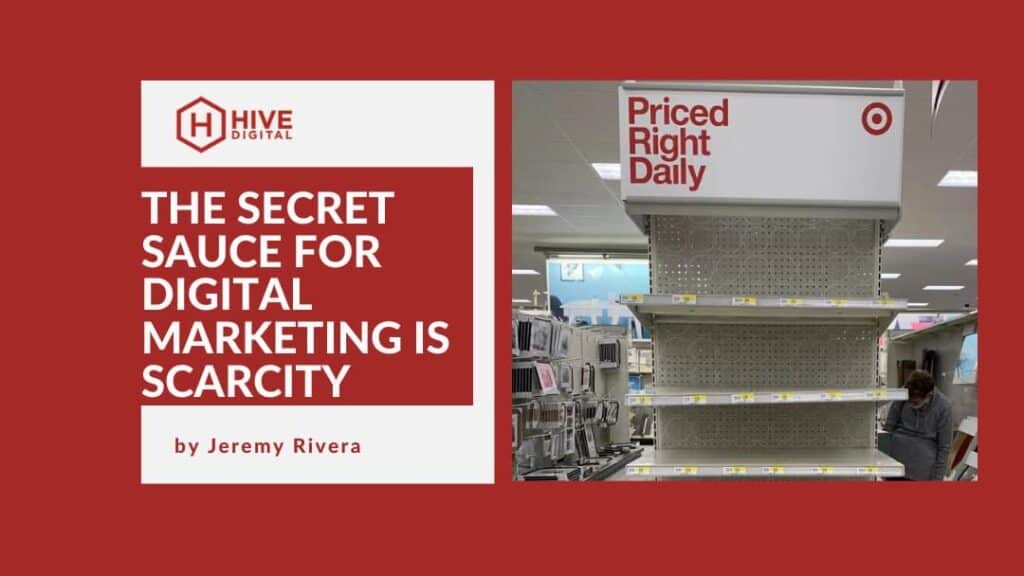If it’s hard to get, it must definitely be worth something. This is what scarcity tells us.
We attach more value to things that are few in quantity. We perceive things as more desirable when there’s a chance that we can’t acquire them anymore. We tend to want things that are harder to get.
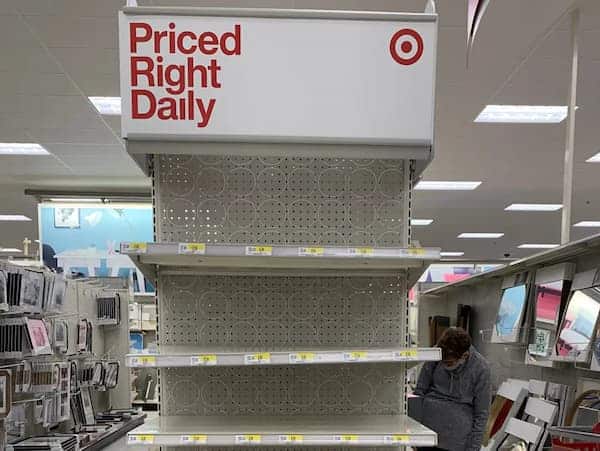
In short, we always want what we can’t have. This is the part where marketers sneak in scarcity into their marketing tactics.
While many are now using scarcity in their email marketing to boost sales, only a handful are able to succeed.
Why’s that so? Simple. They’re not using the right techniques.
If you’re among these marketers we’re talking about, we gotta say, you’re lucky to be here. This article’s just what you need to become a scarcity marketing expert, or at least, close to it!
Before we dive in to these efficient sale-boosting tactics, let’s talk briefly about scarcity and its impact on the marketing industry.
How effective is scarcity, really? Here’s an example:
Adewole, Lee, and Worchel conducted a psychological study on the effects of supply and demand on ratings of object value.
They asked 200 women to choose between two identical jars of cookies, with both jars containing the exact same cookie. The only difference was that one jar contained 10 cookies, while the other one only had two in it.
Should they go for the jar with 10 cookies, or will two cookies be enough to satisfy their sweet tooth?
Which jar do you think had the most votes? If you guessed the one with only two cookies, you’re totally right!
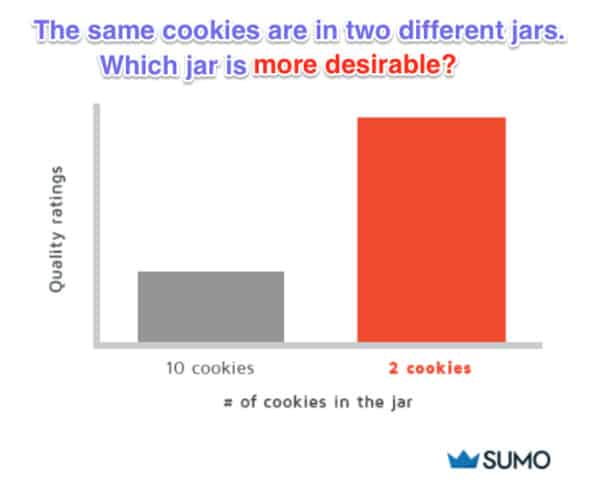
Psychologically speaking, people assume that if there’s less of something, it must be in high demand. The higher the demand is, the higher the value.
This is how you can use scarcity in marketing.
What is Scarcity Marketing?
Simply put, it is a marketing strategy that capitalizes on a consumer’s fear of missing out on something. It’s based on the scarcity principle that we desire anything that’s difficult to acquire.
Marketers normally use scarcity in connection with a discount that’s only available for a limited time. They only focus on the discount, when in fact, it’s the discount’s urgency they should pay attention to.
Although it’s true that scarcity marketing should go hand in hand with discounts and special offers, you have to understand that it’s not the discount that drives customers to buy – it’s the urgency.
If you believe that offering discounts and awesome deals is all it takes to entice your readers, you’re going to have to rethink that.
Ask yourself this: If your product or service is that good, then what’s the point of giving it a discount?
The reality is, there are so many ways to apply scarcity in marketing without the need to lower the price of your merchandise.
A good example that proves you don’t need to offer discounts anymore is limited product availability. People prefer things that are limited in stock, as it gives them a sense of exclusivity and power.
According to Robert Cialdini, aka the Godfather of Influence, the idea of potential loss affects how we make our decisions. We become motivated to buy something if we know that it won’t be there the next time around.
Let’s take a look at Black Friday, a 24-hour shopping event where everything’s on sale. In actuality, it’s not that customers are fighting to get those unbelievable deals, but it’s the thought of missing the deals while they’re still there.

Phrases like “hurry, limited stock!” are why shoppers force themselves to wake up in the wee hours of morning and spend hours in line.
It’s the fear of missing out (FOMO) coming into play – and this is where you take advantage of scarcity marketing
As an eCommerce company, one of the most effective marketing strategies to skyrocket your conversion is by using scarcity. Along with several scarcity advertising examples, here are six innovative scarcity marketing tactics to boost your sales:
Create Limited Edition Products
Remember when Coca-Cola was selling Daft Punk bottles back in 2010? What about Starbucks’ unicorn-themed frappe that generated a lot of heat on social media?
If you’re wondering why we don’t hear about them anymore, it’s because they were made as special edition products. Did they bring in huge sales, though?
That’s a big yes.
Selling limited edition products can create a sense of urgency. Knowing that these products will run out of stock and never to return again, people will buy them as soon as possible.
Many authors are notorious for using this scarcity marketing tactic. After releasing the first series of a novel, they don’t release it again. This triggers customers to grab that copy before it sells out.
Board game companies are also fond of creating special editions of their most popular games.
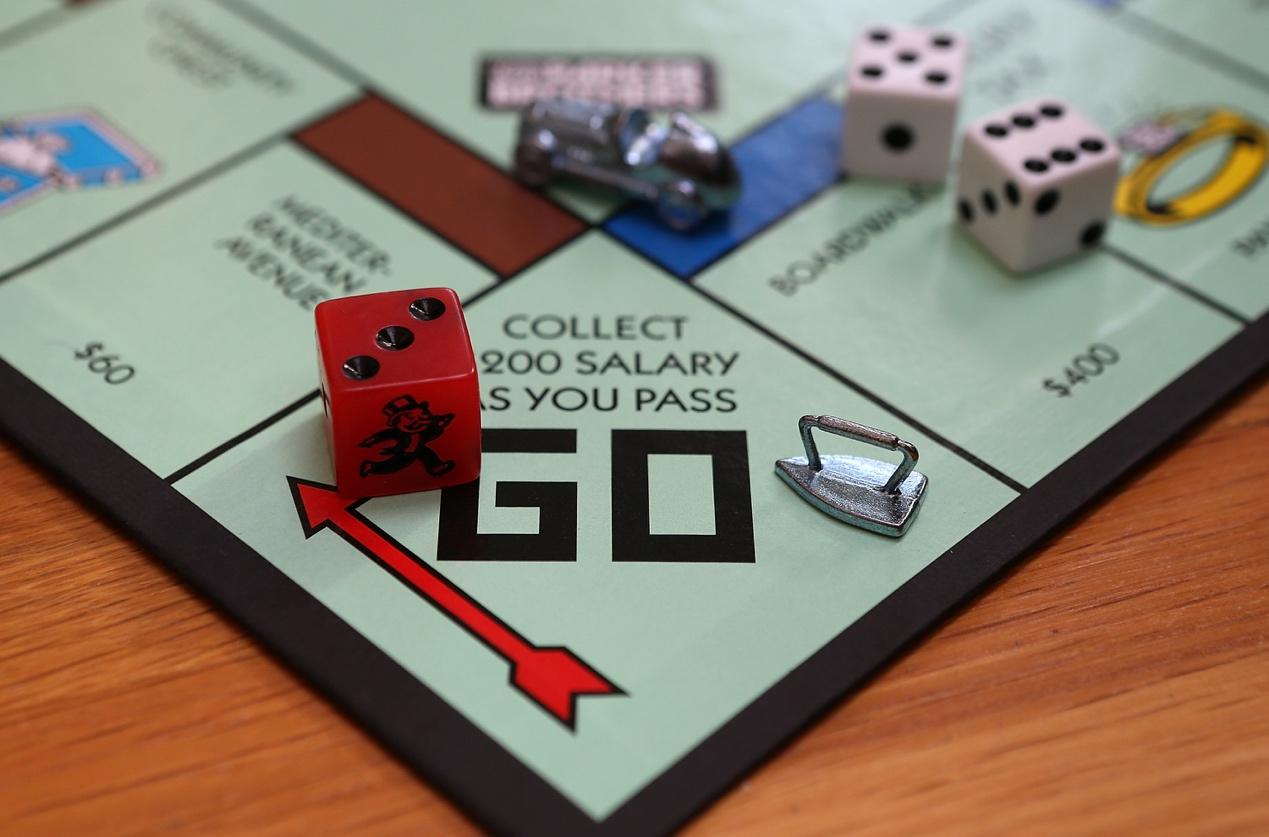
Monopoly has been constantly using this strategy to convince their customers to buy more of the same game, but with a twist. In 2006, they teamed up with Nintendo to make a limited edition game featuring Mario, Luigi, Zelda, and other Nintendo characters we all love.
If you have an item that’s produced in limited quantities, you can use that scarcity to sell more. There are two ways to use this tactic.
The first option is to promote your products ahead of time and encourage prospects to pre-order if they’re interested.
Second, inform your prospects that a popular item is back in stock, but will sell out sooner than they think. Here’s Chubbies to inspire you:
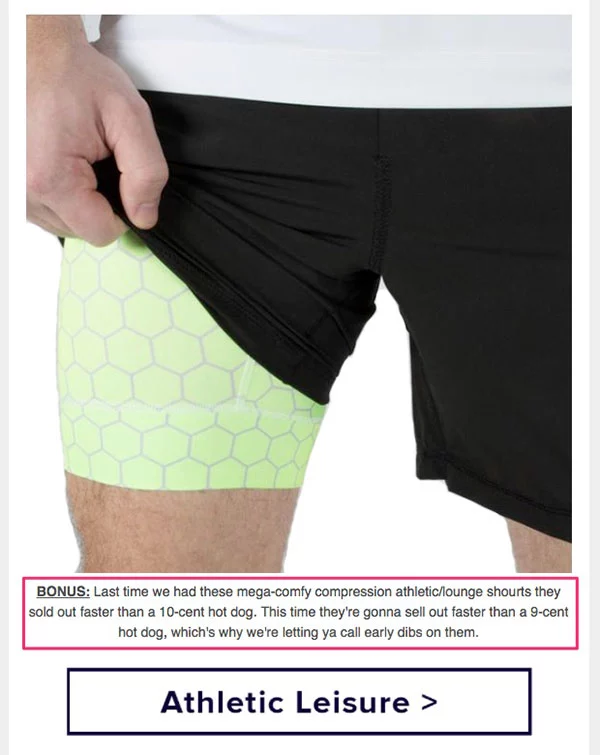
To emphasize limited availability, make sure that you include the exact number of items you’re producing. That way, potential customers will be more compelled to buy.
Offer Freebies
We all love getting free stuff, don’t we? No matter what they may be, items that are given to us for free bring us happiness like no other.
This brings us to our next scarcity marketing tactic: Freebies for your customers!
Give your prospects a reason to buy your products by offering them freebies, and don’t forget to incorporate a scarcity element for a sense of urgency. Here’s how Starbucks was able to do it:
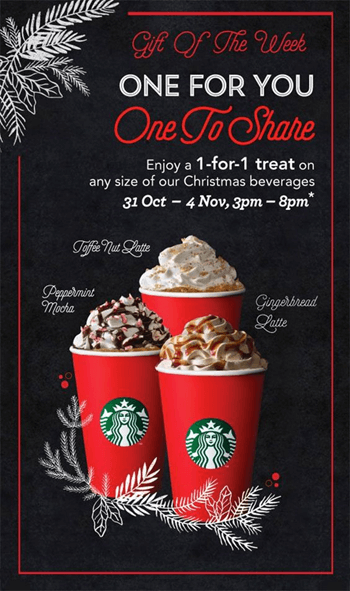
Image Source: Pinterest
In this advertisement, the world’s largest coffeehouse chain is using the “buy one, take one” approach. It shows scarcity by including its limited time period.
If you’re selling products with a high price range, like jewelry or high-end electronics, offering a freebie should be a no-no. You’ll end up undermining the quality of your product.
People are going to wonder why you’re selling an expensive item and giving away another of the exact kind for free. This can leave them feeling suspicious about your product.
Instead of a freebie, you can offer a free service or resource related to your product.
For example, if a customer buys an Ultra HD television, repay them with a free 3-month Netflix subscription. If you’re selling gym equipment, you can provide a free training guide.
Use Next-Day Shipping Countdowns
Customers are becoming more and more impatient these days, especially online shoppers. As soon as they press “purchase,” they expect their delivery to arrive pronto!
Because of this, many companies struggle to keep up with deliveries and shipping time. This is where you can count on the “next-day shipping” tactic to save you.
Letting your prospects know how much time is left before next-day shipping expires increases their urgency to make an immediate purchase. If they want a certain product and they want it by tomorrow, they better buy it now.
Amazon uses this scarcity marketing tactic exceptionally well.
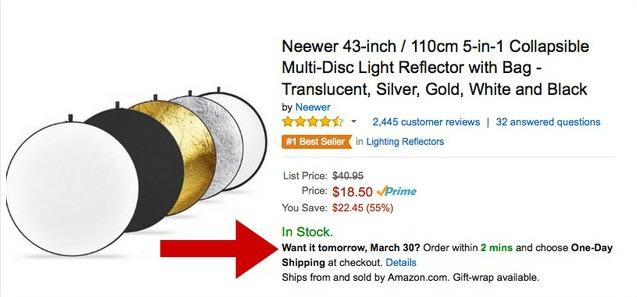
Image Source: Sumo
Notice that they provide the option to choose one-day shipping upon checkout. Also, by adding “within 2 mins,” they’re persuading customers to take action immediately if they want to receive their items the following day.
Let Shoppers Know About Low Stocks
The pain of losing something is twice as immense as the pleasure of gaining it.
Besides having this fear of missing out on a product they might need, the thought that someone else might snatch it under their nose worries customers.
This is why using the “low stocks” or “few items left” tactic can work wonders for your sales.
Since scarcity makes items appear more popular that they really are, especially for online buyers, it’s not surprising that eCommerce stores are now leveraging low stock notices.
ModCloth easily demonstrates scarcity here by indicating low stock items in red.

Image Source: CXL
Seeing that the item they want is close to selling out gives customers all the more reason to make a purchase immediately.
Another option to let your prospects know that a certain product is almost out of stock is by sending them an email, like what Death Wish Coffee does here:
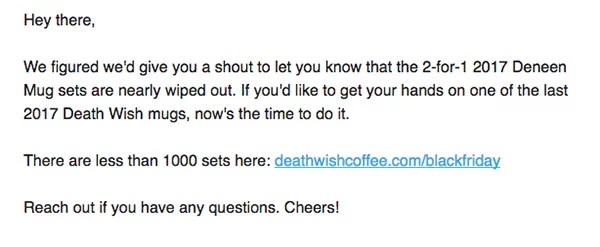
Image Source: Sleeknote
This marketing scarcity strategy is excellent because they’re doubling the urgency here in two ways: using the keyword “now” and showing the number of items left.
For sure, such an email will put some extra pressure on your readers, eventually bagging you more sales.
Use a Device-Specific Sale
Barring a particular device from getting a discount may sound like a bad idea, but trust us, it can actually help you bring in lots of cash.
You’ve probably noticed by now that mobile shopping is rapidly growing, and it will only continue from here.
What makes it more beneficial than desktop shopping is that it allows people to shop from anywhere as long as there’s service. No wonder49% of people exclusively use their phones to shop!
Researchers predict that by 2021, mobile will dominate online sales, driving 54% of all sales.
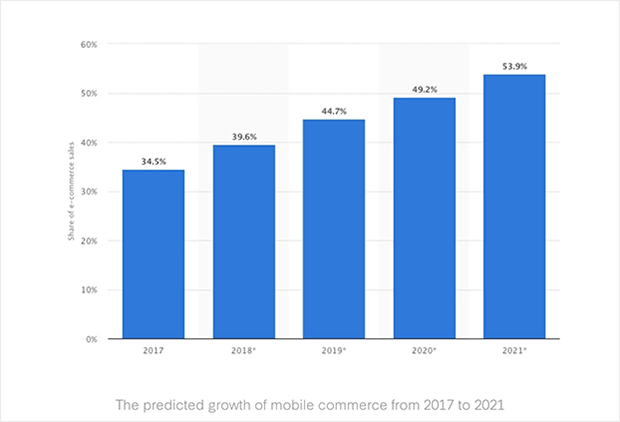
Image Source: OptIn Monster
This should be the motivation you need to start using device-limited sales and bonuses.
Although this scarcity marketing tactic works well in general, the impact it brings to hardcore smartphone users is far greater. With the discount only available on mobile devices, it offers exclusivity among shoppers.
Email everyone on your list and inform them that you have a few hot deals in store for them, but on one condition: They need to buy on mobile (or through your app).
Here’s Birchbox showing you how it’s done:
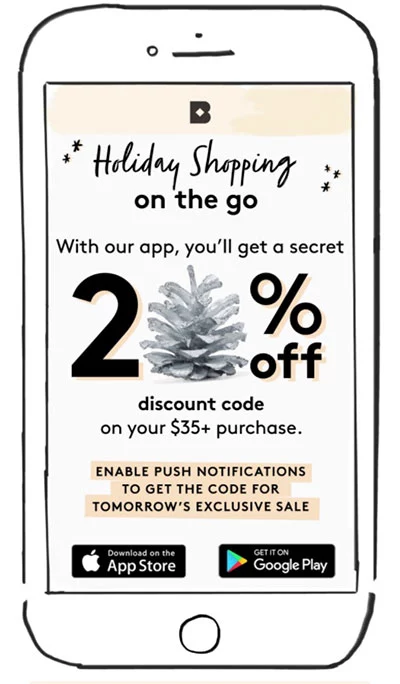
Image Source: Sleeknote
The beauty company gives shoppers the promise that they’ll get a “secret discount,” provided that they’re using the app on their phones.
It’s also a good idea to include limited time offers or perhaps some freebies to drive more engagement and sales.
Come Up with Seasonal Offers
You suddenly find yourself craving McDonald’s McRib sandwich. You drive your way to the nearest McDonald’s, greet the cashier with your charming smile, and excitedly order the sandwich.
Just like that, the excitement turns into disappointment when they tell you that the product’s unavailable. Then, you remember, it’s not fall season yet!
This is how seasonal offers work, and we can tell you, it drives sales like crazy. The NPD can attest to that.
Season-specific products mean that they’re only there for a limited time, particularly during special holidays. Making them available all-year round will only defeat its purpose.
Below are two scarcity advertising examples that promote seasonal offerings:
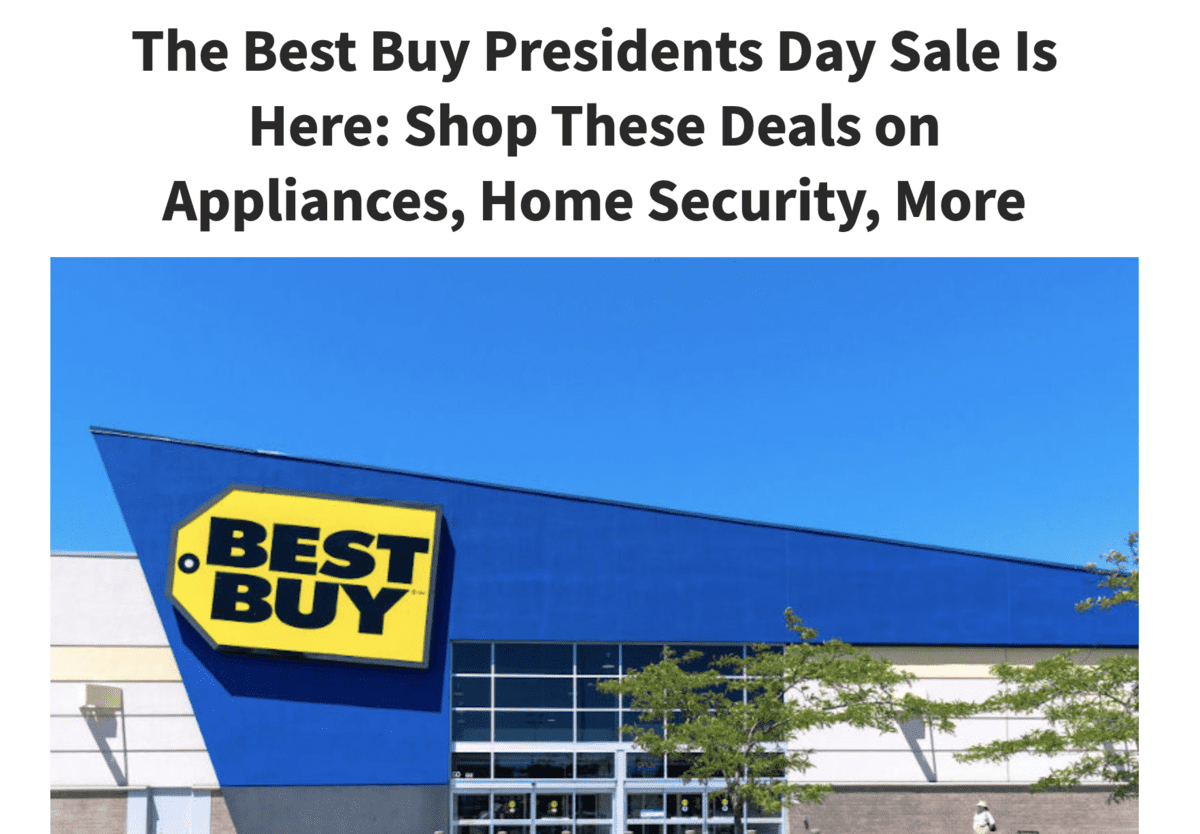
Image Source: Referral Candy
Best Buy doesn’t just rest on it’s laurels for Black Friday, it also leverages other holidays throughout the year and emphasizes specific goods for the effort.
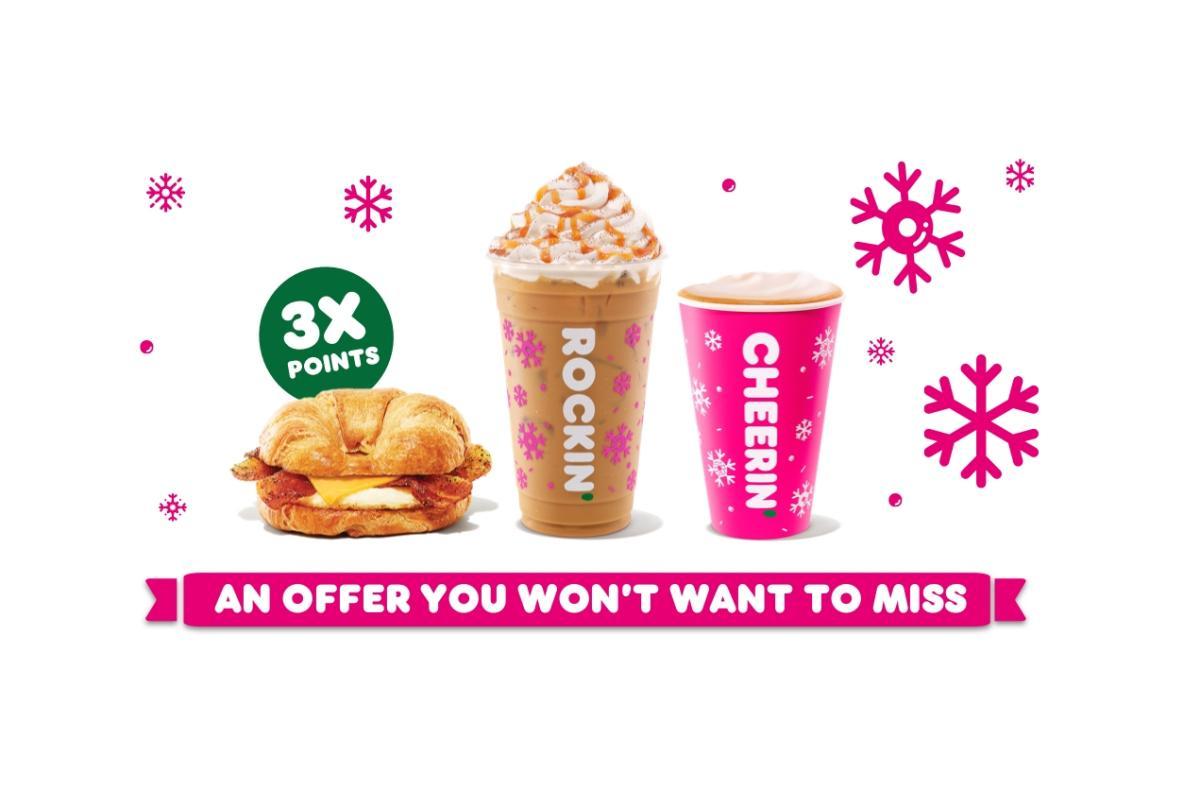
Image Source: Dunkin’ Donuts
Dunkin’ Donuts gives customers another reason to look forward to the holiday season.
Get Ready to Boost Your Sales Using These Innovative Scarcity Marketing Tactics!
Scarcity is one of the most important ingredients in creating a recipe for success in the marketing industry.
It helps you double, or even triple, your sales in just a short span of time – if you’re using the right strategies, that is!
Take your scarcity marketing to the next level and you’ll be at the top of your game. Your competition will wish they were you.

